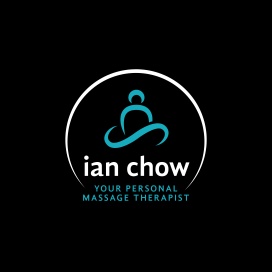By Ian Chow, Certified Massage Therapist / Infant Massage Instructor / Oncology Massage Trainer
Length: 4 mins read (870 words)
If you do enjoy reading the content of this blog, please do consider in buying me a cup of coffee by clicking here.

Er, er, er….what? Palpation? Did the module spell it wrongly and it actually suppose to be “palpitation”? Kid you not, that question actually did arise in my naive self during then.
Quoted from Wikipedia, palpation is the process of using one’s hands to check the body, especially while perceiving/diagnosing a disease or illness…….Palpation is used by physicians, as well as chiropractors, massage therapists, physical therapists, osteopaths and occupational therapists, to assess the texture of a patient’s tissue (such as swelling or muscle tone), to locate the spatial coordinates of particular anatomical landmarks (e.g., to assess range and quality of joint motion), and assess tenderness through tissue deformation (e.g. provoking pain with pressure or stretching).
I still remember back in my first class of palpation in Osteopathy (taught by Mr Jules Rampal, an established meditation teacher and Osteopath), we were suppose to be palpating the sacrum bone and gluteus muscle. All I can feel is just the skin, whatever underneath the skin and the bone itself. But we were require to feel way much more than that including the edges / borders of the bone, the ligament that are attached to it, the muscle fibers, the sensation or message that we receive by touching a particular part…..and before that, to feel the different layers; the epidermis, the dermis, fat, superficial layer of muscle, deeper layer of muscle and the bone. And on top of that, to be able to describe my palpation in anatomical term. Sh*t! Really?

By the end of the class, I got pretty frustrated and just went wtf is this. But luckily for me, after a few classes, I started to get the hang of it and it got slightly better. I still have a long way to go but at least, there is now more and more message that the body is telling me by just touching it.
As a massage therapist, sure, we are not expected to be feeling to that level of precision or depth like how an Osteopath may need to but yet, our sensory of touch do still play a very vital role in order for us to deliver a good treatment.
I am sure you have been to a massage where the therapist are just doing their routine without much ability (or maybe they just couldn’t care less) to feel what they are working on to enhance that work.
So, how does one palpate more effectively as a massage therapist? At least for me, the trick or the lesson that I feel useful are:

a). Know your anatomy
At least, know about the muscles and bones that you are working on in that anatomical position. If you know about the ligament attached, the muscle insertion, its innervation, it’s specific function, that is definitely an added advantage.
b) The concept of Presence, Attention and Intention (owe this to my myofascial technique lecturer, Mr Van Nam)
Presence – Be in the space that you are working with.
Attention – Be with the person whom you are working on. Give your 100% focus on the part that you are palpating. Register all the information that the body is telling you.
Intention – Be aware of what is your objective for doing certain actions, are you looking for certain signals or symptoms? Are you aiming to feel certain sensation? But in the first place, are you even suppose to feel that sensation? Basically, what is your aim and intention?

c). Practice, practice, practice
The more body you get to work on, the more different experience you will get. If you can, work on body that is of different age group, different ethnicity, different profession, different height / weight, different medical history…..be as diverse as you can. And just practice, practice, practice.
d). Everyone is unique
Accept the fact that there is no single person that is the same as the other. Different body will give you different sensation and everyone is unique due to their posture, habit, diet, age, genetic code, medical history etc. So, there is no apple to apple comparison. Try not to have definite preconceived idea. There could be tell-tale sign but that doesn’t mean that someone who has hurt their left ankle will give you the same sensation as another person who have also hurt their left ankle.
e). Heart first then your mind
Sure, anatomy knowledge and knowing what you are touching are very important but most times, just let your heart feel and then only let the mind do the deciphering. You need to trust your instinct at times. Which then bring me to the next related point…..
f). Don’t forget to breathe
More often than not, when I first learn osteopathy and massage therapy, I was often being reminded to relax and breathe. Lol. I am sure you have been in situation where you are trying so hard to think or to feel and you start to hold your breathe then the next thing you you know, your hand and your body start tensing up. I can guarantee you, you will end up feeling nothing much. So, just relax, breathe and let the heart feel then the mind to decipher.
Next: Terminology



